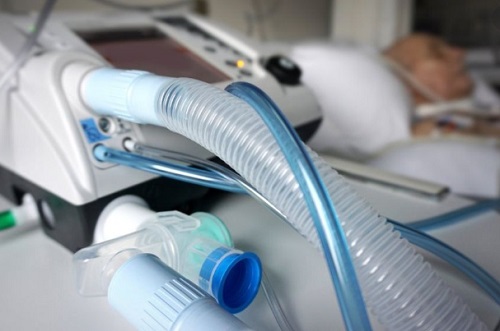
Coronavirus: Ghana has over 400 ventilators
The Presidential Advisor on Health, Dr Anthony Nsiah Asare has revealed that the 307 ambulances recently procured to help augment operations of the National Ambulance Service (NAS) are equipped with mobile ventilators.
He said the country already had 100 ventilators in the health system before the ambulances arrived in January.
Advertisement
Responding to a query from Kwesi Pratt Jnr on Accra-based Peace FM Tuesday, Dr Asare said there were over 400 ventilators in Ghana's health system.
Dr Asare said the country had also acquired 50 additional ventilators following the outbreak of the Coronavirus in the country.
He also disclosed that a total of 2547 have been tested for Coronavirus in Ghana with 152 persons testing positive for the illness.
Ghana has also recorded two recoveries and five deaths from the Coronavirus.
According to the World Health Organization, one in six COVID-19 patients becomes seriously ill and can develop breathing difficulties.
The breathing difficulties are managed with ventilators - the mechanical breathing devices which are crucial in the fight to save patients whose lungs are assailed by the coronavirus.
According to the Society of Critical Care Medicine, the United States which has more confirmed cases than any other country in the world has 200,000 ventilators.
The United Kingdom's National Health System is reported to have 8,175 ventilators.
Meanwhile, the Africa Centres for Disease Control and Prevention, meanwhile, said this week that countries in the continent were looking to engage with wealthier countries to secure key supplies, including ventilators, if the situation deteriorates.
How does a ventilator work?
In the most severe cases, the coronavirus damages healthy tissue in the lungs, making it hard for them to deliver oxygen to the blood.
Pneumonia can develop, along with a more severe and potentially deadly condition called acute respiratory distress syndrome, which can damage other organs.
To prevent this, mechanical ventilators feed oxygen into the lungs of patients with severe respiratory problems through a tube inserted down the throat.
The ventilator also has a humidifier, which adds heat and moisture to the air to match the patient's body temperature.
Patients with milder symptoms may be put on non-invasive ventilation, using face masks, nasal masks or mouthpieces which allow pressurised air or mixtures of gases to be pushed into the lungs.
Additionally, hoods with pressurised oxygen pumped in them via a valve are also commonly used.



